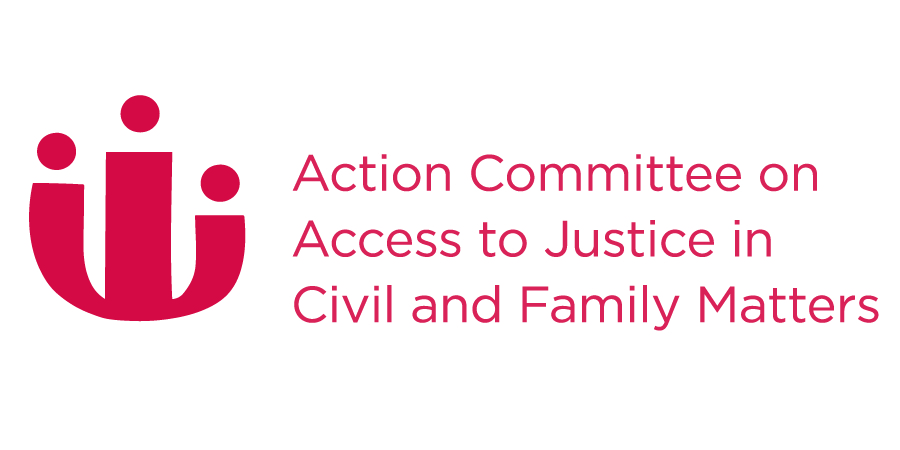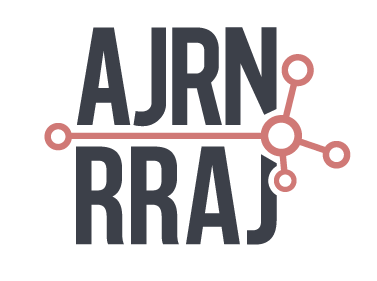People-Centered Access to Justice and the Tribunal System
Chioma EbohWednesday, December 18, 2024
This A2J blog examines several provincial and federal tribunals in Canada for their alignment with concepts generally associated with “people-centered justice”. The tribunals included in this blog are each differently situated in the tribunal system. They are not representative of other provincial or federal tribunals, or other tribunals in Canada with similar mandates. For clarity, the information about each tribunal is presented under the following sub-headings: Provincial/Territorial/Federal; What they do; How they do it; Operations; Justice delivery methods; and, People-centered aspects.
Name of Tribunal: British Columbia Civil Resolution Tribunal (CRT)
Provincial/Territorial/Federal: British Columbia
What they do: The CRT is Canada’s first online tribunal and is a part of the British Columbia public justice system. It takes pride in offering an accessible and affordable way to resolve many types of civil law disputes without a lawyer. If the parties want to, they can also request permission to be represented. It is an independent quasi-judicial tribunal that operates under the authority of the Civil Resolution Tribunal Act[1] Its guiding principles are timeliness, flexibility, accessibility, affordability, and efficiency.[2]
How they do it: The CRT has worked to improve user experiences, devising ways to implement user-centered design and testing.[3] The following questions have been posed by the CRT;
- How can we mitigate user risks?
- How can access barriers be reduced?
- How can staff time be optimized?
- How can we save money?
- How can the Civil Resolution Tribunal build trust?
Operations: Staff. The chair of the CRT is supported by approximately 92 staff including the vice chairs, executive staff, and full-time tribunal members.
Number of hearings and Time to Resolution. As an example, During the 2023-24 fiscal year, the CRT received 7,815 applications for dispute resolution for certain motor vehicle accident, strata property, society, cooperative association, and small claims disputes, as well as claims about non-consensual sharing of intimate images. Of the 6,126 claims closed, 3,209 were resolved by consent or withdrawn. With the exception of expedited intimate image claims, the CRT encourages a collaborative approach to help participants reach an agreement as early as possible, relying on adjudication as a last resort[4].
Justice delivery methods: Services available online. The CRT is Canada’s first online tribunal. The online Solution Explorer is the first step in the CRT claims process. It asks simple questions and gives free customized legal information and options based on a person’s answers. Its self-help tools, like communication templates, might help people resolve their issue on their own. The intention is to help people better understand their legal issue and options before they spend time and money on making a claim. During the 2023-24 fiscal year, the CRT’s Solution Explorer was used 34,465 times..[5] Services available in person/by phone, etc. Although there is no service available in person, there are some services available by phone and mail with the CRT. The CRT process has four main stages, starting with a free Solution Explorer through which parties can make a claim or respond to a claim someone has made against them. The second stage is the negotiation stage. Here, the CRT uses a secure and confidential negotiation platform and parties can talk through the issues in the claim and try to reach an agreement. The parties usually have a few weeks to negotiate and if an agreement is not reached, a case manager will contact them to move to the facilitation stage. During the negotiation stage, the parties are given some resources to help them do this; the CRT does not interfere at this stage.[6] Facilitation can be done by phone, email or both. During facilitation, parties are required to submit information such as an evidence worksheet and there are usually deadlines.[7] If the parties agree on a way to resolve the claim, there would be no need for a CRT final decision. On the other hand, if the parties are unable to agree under facilitation or negotiation, an independent tribunal member will decide the claim.
People-centered aspects: To use the CRT, there is a compulsory fee that parties have to pay.[8] Parties who are experiencing financial difficulties or, for whatever reason cannot afford the CRT fees, can apply for such fees to be waived.[9] The CRT also encourages feedback and caters to people with special needs. Research from A2JBC provides a good way to understand the catalysing action and improvements in access to civil and family justice being advanced by the CRT.[10]
Name of Tribunal: Office of Residential Tenancies
Provincial/Territorial/Federal: Saskatchewan
What they do: The Office of Residential Tenancies [ORT] is an independent agency that provides information about landlord and tenant rights and responsibilities in Saskatchewan. The ORT operates under the Residential Tenancies Act, which sets out the rights and responsibilities of landlords and tenants, including rules around the payment of rent, evictions, maintenance, obligations of landlords and tenants, , and more[11]. When landlords and tenants cannot resolve disputes on their own, both have the right to ask the ORT to make rulings to settle the dispute. The ORT states that it free from outside influence, and impartially decides applications without favour for either landlords or tenants.[12] Notwithstanding,
How they do it: To get the ORT involved in settling a landlord-tenant dispute, Form 9c would need to be filled and then emailed or mailed to the ORT, together with the applicable fee and all supporting evidence. The ORT would then send a Hearing Notice based on the information provided in the application. As of March 2022, changes have been made to the way landlords and tenants can file complaints with the ORT. Applications can be submitted through the ORT’s new online portal. The online portal allows residential landlords and tenants to log in using their business or individual Saskatchewan account to create notices, submit applications, evidence, photos, and other documents as well as make payments 24 hours a day.[13] The ORT’s decisions are given by Hearing Officers.
Operations: Staff. The ORT generally has approximately eight hearing officers and four Deputy Directors who hear approximately 6000 cases annually.
Number of hearings. The ORT receives about 8000 applications per year.[14] This statistic, however, is likely a significant underrepresentation of the number of landlord-tenant disputes as reports by the Saskatchewan Human Rights Commission show that many tenants are reluctant to engage in the ORT process.[15] According to one tenant, “a lot of people would rather just pack up and leave the house when faced with the prospect of having to deal with the ORT”.[16] This suggests that there is a perception of inequality or bias in the tribunal process.
Justice delivery methods: Services available online. The ORT launched an online public access portal for landlords and tenants. This system aims to allow ORT staff to respond to claims faster and better manage claims from beginning to end, improving access to justice and reducing reliance on hard copy documents.[17] Services available in person/by phone. The ORT received over 150,000 inquiries via email and phone between 2020 to 2021and accepted 3969 applications from tenants and landlords. Applications typically involve disputes over security deposits, overdue or unpaid rent, damages to property, and abandoned personal property.[18]
People-centered aspects: Sarah Buhler and Rachael Tang carried out research in 2019 to analyse how tenants prepared for their hearings, their experiences of the hearing process, and their perception of fairness throughout the process. The interviewees described a range of problems that brought them to the ORT.
On going to the ORT, some tenants noted that they found the guidance given by the ORT staff very helpful and they were told about how the process works; other tenants have offered different accounts.[19] Concerning the hearing itself, several themes emerge. Some people claim that the hearing officers appeared to be biased in favour of the landlord from the onset before the hearing even started.[20] In other instances, the participants stated that the hearing officers took active steps to equalize power and that the whole experience was not one-sided at all.[21]
In most cases involving eviction applications, the landlord was the victor. Furthermore, in some cases, even if the tenant was successful in the hearing process, this win later strained the landlord-tenant relationship resulting in the tenant leaving in the end.
Name of Tribunal- Social Security Tribunal of Canada
Provincial/Territorial/Federal: Federal Tribunal
What they do: The Social Security Tribunal (SSTC) is an independent administrative tribunal that makes decisions on social security appeals. It is committed to providing Canadians with an appeal process that is simple, quick, and fair. It decides appeals about whether parties can get employment insurance, Canada Pension Plan disability, and other CPP benefits as well as Old Age Security.[22]
How they do it: SST Regulations provide that Appeal Division members hearing a case on merit can hold a hearing by written questions and answers, by teleconference, by videoconference, or by the personal appearance of the parties.
Operations: Funding. The SSTC gets funding from the federal government’s EI Operating Account, CPP Operating Account, and the Consolidated Revenue Fund for Old Age Security (OAS) benefits.[23] Number of hearings. According to a 2022 Progress Report, SST processed 5115 appeals that year.[24]
People-centered aspects: The SSTC has established a best practice standard for assisting the public using its services. A “navigator” contacts each appellant after an appeal is filed to provide help, if needed, in understanding the process, completing forms, determining what hearing format is best for them, and giving general guidance on how to prepare for the hearing. The navigator also provides guidance on understanding the IT requirements for electronic hearings and can provide information on how to effectively participate in the process.[25]
As not every party has equal access to the internet as the other, the SSTC has a long-standing practice of making Service Canada offices and computers across the country available for appellants who choose to have their hearing by videoconference.[26]
The SSTC has partnered with an independent distress helpline. If an appellant shows signs of emotional distress when contacting frontline SSTC staff, the staff person will offer to connect them with a free, confidential listening and crisis intervention service.[27]
Name of Tribunal: Immigration and Refugee Board of Canada
Provincial/Territorial/Federal: Federal Tribunal
What they do: The Immigration and Refugee Board of Canada (IRB) is Canada’s largest independent administrative tribunal. It is responsible for making decisions on immigration and refugee matters, efficiently, fairly, and in accordance with the law.[28]
How they do it: The IRB makes decisions on questions of immigration and refugee protection. It is supported by the Refugee Protection Division, Refugee Appeal Division, Immigration Division as well as the Immigration Appeal Division. It is also supported by the Immigration, Refugees and Citizenship Canada (IRCC) and The Canada Border Services Agency (CBSA).[29]
Operations: Staff. The IRB has approximately 1800 employees.[30]
Funding: In 2022-23, the annual budget was $262 million.[31]
Justice delivery methods: The IRB started offering services online during the pandemic and continued to offer virtual hearings post-COVID. Services available in person/by phone, etc. The in-person process is still available for refugee claims.
People-centered aspects: Remote hearings at the IRB have been argued to be more efficient than in person-hearings since they allow refugee claimants have a hearing without having to travel to the location of the adjudicator. This paves a path for some asylum seekers to become permanent residents sooner.[32] A refugee from Turkey, one of many people who benefited from the virtual format, described the development as a “comforting experience”.[33]
There have been some policy changes/initiatives which the IRB has put in place to improve access to justice. One such change includes the establishment of a Quality Assurance Framework (QAF), which includes performance management, targets and evaluations, legal review, training, and professional development and mentoring.[34] Before any IRB adjudicator can be recommended for reappointment, they must have received regular performance appraisals and met quality objectives. New IRB adjudicators are trained extensively in “plain language writing and active adjudication” in the hearing room. The IRB also invests in mentoring new members and members who are struggling with quality or productivity issues.[35]
A Gender-Related Task Force (GRTF) was established by the IRB in 2020 to make sure that all gender-related refugee claims are decided in a courteous, trauma-informed manner.[36]
Name of Tribunals: Landlord and Tenant Board [LTB], the Social Benefits Tribunal [SBT], the Human Rights Tribunal of Ontario [HRTO], and the Child and Family Services Review Board [CFSRB]
Provincial/Territorial/Federal: Ontario
What they do: The LBT enforces the rights of residential landlords and tenants.[37] The SBT hears appeals from people who have either been refused social assistance or who receive social assistance but disagree with a decision that affects their eligibility for assistance, the amount of assistance they receive, and the benefits they receive.[38] HRTO resolves claims of discrimination and harassment brought under the Human Rights Code in a fair, just, and timely way.[39] The CFSRB conducts reviews and hearings on several matters that affect children, youth, and families in Ontario.[40]
How they do it: All four tribunals carry out services through electronic and written formats. Before COVID-19, such digital hearings were uncommon.[41]
Justice delivery methods: Services available online. The four tribunals began scheduling matters for electronic hearings that would have previously been held as an in-person hearing.
Services available in person/by phone. There is still an in-person option in some cases. According to the Updated Practice Direction on Hearing Formats, matters could proceed as written or electronic hearings except where the party can establish that an in-person hearing is required to accommodate a Human Rights Code-related need or that a written or electronic hearing will result in an unfair hearing.[42]
People-centered aspects: Tribunals Ontario recommends that these tribunals engage more with stakeholders before making major changes. Additionally, Tribunals Ontario recommends that the LBT, SBT, and HRTO should have a process for requesting an in-person hearing in the post-COVID-19 era if electronic hearings are the default option. This is because there needs to be a readily accessible form and a straightforward process to request an in-person hearing.[43] This would ensure that user experience is a priority.
Name of Tribunal: Nova Scotia Human Rights Commission
Provincial/Territorial/Federal: Nova Scotia
What they do: The Nova Scotia Human Rights Commission (Commission) is committed to actively engaging and working with all Nova Scotians to address issues of discrimination by effectively advancing equity and dignity, fostering positive and respectful relationships, and protecting human rights.[44]
How they do it: Most human rights complaints are resolved through a process called a resolution conference. When a complainant is accepted, planning begins to bring all parties together. Then all participants at the resolution conference may share their perspectives and talk about what matters to them. Sometimes, a resolution conference is held to decide on the next steps. If the latter is not enough, alternative investigations are made. After such investigations, the Commissioner’s decisions are final.[45]
Operations: Staff. About 13 Commissioners including the Chair and Vice-Chair.
Justice delivery methods. Services available online. The Nova Scotia Human Rights Commission has free online courses such as “Safe Spaces Make Great Workplaces” designed to help employers address sexual harassment in the workplace. Services available in person/by phone. If a complainant believes that his or her human rights have been violated, the first step is to contact the Commission by phone or in person. If the complaint falls under the Nova Scotia Human Rights Act, the human rights officer would draft the complaint in person or over the phone.[46]
People-centered aspects: Concerning self-represented complainants using the Commission, Equity Watch found that in some cases, regardless of the level of legal knowledge, with no outside legal assistance, complainants are at a great disadvantage in the human rights system.[47].[48] It has been suggested that the Nova Scotia Human Rights Commission could follow a different model, with separate bodies with distinct mandates; (1) a Commissioner responsible for research, education, monitoring, and advocacy; (2)a direct access tribunal that is responsible for complaint intake and adjudication; and, a Human Rights Legal Support Centre providing legal advice and representation to individuals suffering discrimination.[49]
Name of Tribunal: Alberta Labour Relations Board
Province/Territory: Alberta
What they do: The Alberta Labour Relations Board (ALRB) is an independent tribunal responsible for the day-to-day application and interpretation of Alberta’s labour laws. The Board actively encourages parties to settle their disputes through honest and open communication.
How they do it: The ARLB receives, investigates, and decides applications for certification from trade unions. The Board resolves disputes that fall under the Labour Relations Code and collective bargaining process.[50]
Operations: Staff. When an application is received by the board, it is assigned to a Labour Relations Officer (LRO). The LRO is the point of contact for the parties from the start to finish of the application. There are, on average, seven (7) LROs located in Edmonton and Calgary.
Justice delivery methods: Services available online/in person. The ALRB has created several application forms. They are available in the Calgary and Edmonton offices and are also downloadable from the Board’s website. However, the ALRB does not accept electronic (email) applications.[51]
People-centered aspects: While the Labour Relations Code (Code) outlines the process of the ALRB, itis silent on the extent to which the Board can participate in the legislative development process.[52] This question can be answered by the legislative branch as found in the Ontario Labour Relations Act (OLRA). The OLRA permits the Minister to refer to the Board any question in which his or her opinion relates to the exercise of his or her powers under this Act and the Board shall report its decision on the question. A similar requirement (hard law) is not found concerning the ALRB’s code. Implementing such a law could increase trust decisions at the ALRB.
Name of Tribunal: Manitoba Human Rights Commission
Provincial/Territorial/Federal: Manitoba
What they do: The Manitoba Human Rights Commission (MHRC) is an independent agency of the Government of Manitoba and is responsible for administering the Human Rights Code. The MHRC is responsible for promoting human rights principles and educating the public about the rights and responsibilities in the Code.[53]
How they do it: The MHRC is responsible for administering a complaints process. It takes complaints of discrimination, investigates them, and determines if there is sufficient evidence to warrant a public hearing of the complaint.[54] It also offers mediation at various stages in the complaint to resolve without a hearing.[55]
Operations: Staff. The MHRC is made up of approximately 17 staff reporting to an Executive Director.[56] Number of hearings. In 2020, 132 complaints were investigated, 121 complaints were dismissed or terminated and 11 complaints were substantiated. Ultimately, 7 public hearings were held under the Code in 2020 and 8 decisions were issued by the Adjudication Panel in 2020.[57]
Justice delivery methods: Services available online/in person. If a Manitoban feels like they have been discriminated against, they can contact one of the MHRC’s human rights officers. An appointment can be booked in person or staff can be contacted by phone, fax, or email.[58]
People-centered aspects: An extensive report on MHRC was carried out in 2018 by Allan Fineblit[59], who was tasked to undertake a review of the MHRC. He identified three main areas that are fertile ground for positive change.[60] These areas are timeliness, mandate, and adjudication. The report also found that MHRC’s workers were diligent and dedicated but the MHRC seemed to lack sufficient resources. It also appears that there are a lot of frivolous claims being filed at the MHRC which do not amount to a breach of the Code.
The MHRC also utilizes mediation as part of the resolution process.
This work was completed by CFCJ Research Assistant, Chioma Eboh.
[1] Civil Resolution Tribunal, About the CRT, online:<https://civilresolutionbc.ca/about-the-crt/>
[2] Ibid.
[3]CCAT/DoJ/CIAJ Workshop Series: User-centred design on a shoestring (November 2021), see online: <https://www.ccat-ctac.org/wp-content/uploads/2022/06/1_User-Centered_Design_EN.pdf>.
[4] Civil Resolution Tribunal, 2023-24 Annual Report (BC: Civil Resolution Tribunal, 2024) at 17, 19, 21, online: <https://civilresolutionbc.ca/wp-content/uploads/CRT-Annual-Report-2023-2024.pdf>
[5] Ibid at 1 and 16.
[6] Shannon Salter, “Online Dispute Resolution and Justice System Integration: British Columbia’s Civil Resolution Tribunal (2017) 34 Windsor Y B Access Just, 9.
[7] Civil Resolution Tribunal, “What is facilitation”, online:< https://civilresolutionbc.ca/help/what-is-facilitation/>
[8] Civil Resolution Tribunal, “Fees”, online:<https://civilresolutionbc.ca/resources/fees/>
[9] Ibid.
[10] Professor Yvon Dandurand and Jessica Jahn, Access to Justice BC, “Access to Justice Measurement Framework 2017” at 3.
[11] The Residential Tenancies Act 2006, S14.
[12]Saskatchewan, Office of Residential Tenancies, online: <https://www.saskatchewan.ca/government/government-structure/boards-commissions-and-agencies/office-of-residential-tenancies#forms-and-publications>.
[13]Saskatchewan, Office of Residential Tenancies, online; <https://www.saskatchewan.ca/government/government-structure/boards-commissions-and-agencies/office-of-residential-tenancies#forms-and-publications>.
[14] Ibid.
[15] Saskatchewan Human Rights Commission, Access and Equality for Renters in Receipt of Public Assistance: A Report to Stakeholders (Saskatoon: Saskatchewan Human Rights Commission, 2018) at 13.
[16] Ibid at 14.
[17]Saskatchewan, Office of Residential Tenancies Launches New Online Public Access, online: <https://www.saskatchewan.ca/government/news-and-media/2022/march/03/office-of-residential-tenancies-launches-new-online-public-access>.
[18] Ibid.
[19] Sarah Buhler, “Navigating Power and Claiming Justice: Tenant Experiences at Saskatchewan’s Housing Law Tribunal” (2019) 36 Windsor Yearbook of Access to Justice 210.
[20] Ibid at 16.
[21] Ibid at 18.
[22] Social Security Tribunal of Canada, online:<https://www.sst-tss.gc.ca/en/our-work-our-people/2022-progress-report-working-together-justice>.
[23]Social Security Tribunal of Canada, How we work within government, online: <https://www.sst-tss.gc.ca/en/our-work-our-people/we-work-within-government>.
[24] 2022 Progress Report: Working Together for Justice, online:<https://www.sst-tss.gc.ca/en/our-work-our-people/2022-progress-report-working-together-justice#toc-id-3>.
[25] Kathy Laird, Tribunal Watch Ontario Discussion Paper, “The Digital Transformation” At Tribunals Ontario: The Impact on Access to Justice” (29 March 2021) at 20.
[26] 2019 Progress Report: Putting Clients First, Social Security Tribunal of Canada, <https://www1.canada.ca/en/sst/rdl/2019-progress-report.html> 9.
[27] Kathy Laird, Tribunal Watch Ontario Discussion Paper, “The Digital Transformation” At Tribunals Ontario: The Impact on Access to Justice” (29 March 2021).
[28] Immigration and Refugee Board of Canada, online: <https://irb.gc.ca/en/Pages/index.aspx>.
[29] Ibid.
[30] Immigration and Refugee Board, “Funding and Human Resources”, <https://irb.gc.ca/en/transparency/pac-binder-nov-2020/Pages/pac14.aspx>.
[31] Ibid.
[32] New Canadian Media, “Virtual Hearings Speed up Some Refugee Claims, (12 April 2021), online: <https://newcanadianmedia.ca/virtual-hearings-speed-up-some-refugee-claims/>.
[33] Ibid.
[34] Council of Canadian Administrative Tribunals, “How do I foster and measure adjudicative quality in Tribunals” (8 December 2021) at 1.
[35] Ibid.
[36] Ibid.
[37] Tribunals Ontario, Landlord and Tenant Board “What we do”, online:<https://tribunalsontario.ca/ltb/what-we-do/>.
[38] Tribunals Ontario, Social Benefits Tribunal “What we do”, online:<https://tribunalsontario.ca/sbt/>.
[39] Tribunal Ontario, Human Right Tribunal of Ontario, “What we do”, online:<https://tribunalsontario.ca/hrto/>.
[40] Tribunals Ontario, The Child and Family Services Review Board “What we do”, online:< https://tribunalsontario.ca/cfsrb/>.
[41] Kathy Laird, Tribunal Watch Ontario Discussion Paper, “The Digital Transformation at Tribunals Ontario: The Impact on Access to Justice “(29 March, 2021) at 7.
[42] Ibid at 8.
[43] Ibid at 19.
[44]Nova Scotia, Human Rights Commission, online:< https://humanrights.novascotia.ca/>.
[45] Ibid.
[46] Nova Scotia Human Rights Commission, “How to File a Complaint”, online:<https://humanrights.novascotia.ca/resolving-disputes/how-file-complaint>.
[47] Equity Watch, “Justice Impeded: A Critique of the Nova Scotia Human Rights Regime”, (January 2021), at 33.
[48] Ibid at 35
[49] Ibid at 43.
[50] Alberta Labour Relations Board, online:<http://www.alrb.gov.ab.ca/aboutboard.html>.
[51]Alberta Labour Relations Board, online:< http://www.alrb.gov.ab.ca/faq_filing.html#Does%20the>.
[52] Joanne Cave, “Dialogue and Discretion: Redefining the Alberta Labour Relations Board’s Role in Legislative Development” 2020 Canadian Journal of Administrative Law & Practice 33(3) at 12.
[53] The Manitoba Human Rights Commission, “About Us”, <online:<http://www.manitobahumanrights.ca/v1/about-us/index.html>.
[54] Ibid.
[55] Ibid.
[56] Ibid.
[57]The Manitoba Human Rights Commission, 2020 Annual Report, online;<http://www.manitobahumanrights.ca/v1/about-us/pubs/annual-reports/2020_annual_report_en.pdf>15-19.
[58] The Manitoba Human Rights Commission, Complaints, <http://www.manitobahumanrights.ca/v1/complaints/index.html>.
[59] Allan Fineblit, “The Manitoba Human Rights Commission and Human Rights Adjudication Panel” December 2018.
[60] Ibid at 5.



